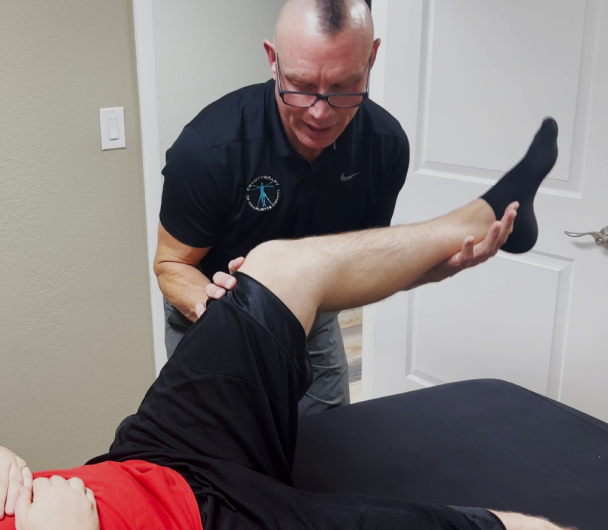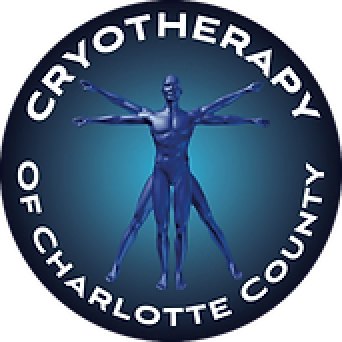STRETCH THERAPY

what is STRETCH THERAPY?
Active Isolated Stretching (AIS) method of lengthening and fascial release is a type of Athletic Stretching Technique that provides effective, dynamic, facilitated stretching of major muscle groups, but more importantly, AIS provides functional and physiological restoration of superficial and deep fascial planes.
Over the past few decades many experts have advocated that stretching should last up to 60 seconds. For years, this prolonged static stretching technique was the gold standard. However, prolonged static stretching actually decreases the blood flow within the tissue creating localized ischemia and lactic acid buildup. This can potentially cause irritation or injury of local muscular, tendinous, lymphatic, as well as neural tissues, similar to the effects and consequences of trauma and overuse syndromes.
Active Isolated Stretching uses active movement and reciprocal inhibition to achieve optimal flexibility. Using a 2.0 second stretch has proven to be the key in avoiding reflexive contraction of the antagonistic muscle. Without activating muscle group contraction, restoration of full range of motion and flexibility can be successfully achieved.
benefits of Stretch Therapy
Stretch therapy significantly increases flexibility by gradually lengthening muscles and connective tissues, which reduces tightness and enhances the range of motion. During guided or personalized stretching sessions, muscles are gently extended beyond their usual resting length. This repeated elongation encourages the muscle fibers to adapt, becoming more pliable over time. Stretch therapy also stimulates blood flow to the targeted areas, supplying essential nutrients and oxygen that aid in muscle relaxation and recovery. The improved circulation helps flush out metabolic waste products, reducing muscle soreness and stiffness. Furthermore, stretch therapy can help relieve tension in surrounding connective tissues like tendons and ligaments, promoting a better overall alignment and reducing the risk of injury. As a result, individuals can achieve greater flexibility, allowing for more fluid and efficient movement during exercise and daily activities.
Stretch therapy effectively reduces pain by elongating muscles and relieving tension in connective tissues. This practice involves controlled, gentle stretching of muscles, tendons, and ligaments, helping to release tightness and improve flexibility. By loosening the muscles, stretch therapy promotes better circulation, enhancing blood flow to targeted areas and delivering oxygen and essential nutrients that aid in healing. Improved circulation also helps in flushing out toxins and metabolic waste that contribute to pain and soreness. Additionally, stretch therapy can stimulate the release of endorphins, the body’s natural painkillers, providing a sense of relief and relaxation. Whether addressing chronic conditions like fibromyalgia or acute pain from injury, stretch therapy helps alleviate discomfort, providing a non-invasive and effective approach to pain management.
Stretch therapy significantly increases blood flow to muscles, enhancing the delivery of oxygen and nutrients essential for optimal movement. As muscles are stretched and tension is released, blood vessels dilate, allowing a greater volume of blood to circulate through the targeted areas. This increased circulation ensures that muscle fibers receive more oxygen and vital nutrients, which are crucial for energy production and tissue repair. Improved blood flow also helps in removing metabolic waste products like lactic acid that can accumulate and cause soreness, thereby promoting faster recovery. By enriching muscles with the necessary elements for efficient contraction and relaxation, stretch therapy helps individuals maintain their mobility, reduce injury risk, and achieve better performance in physical activities.
Stretch therapy aids in repairing and building healthy new tissue by enhancing blood flow and encouraging cellular regeneration. As muscles and connective tissues are gently elongated through controlled stretching exercises, this physical stimulation increases circulation, ensuring that damaged tissues receive a fresh supply of oxygen and vital nutrients needed for repair. Additionally, the process of stretching promotes the removal of waste products and toxins that can accumulate in tight, inflamed areas, thereby reducing inflammation and preventing scar tissue formation. By relieving tension and boosting flexibility, stretch therapy helps the body’s natural healing mechanisms operate more efficiently. It also stimulates the production of collagen and elastin, essential proteins for the maintenance and growth of resilient, pliable tissues, ultimately supporting improved muscle and joint health.
Stretch therapy aids in detoxifying the body by promoting the movement of blood and lymphatic fluid. When muscles are stretched, it helps to stimulate circulation, encouraging blood flow that carries oxygen and essential nutrients to cells while simultaneously removing metabolic waste products. This increased blood flow is crucial for optimal organ function and muscle recovery. Moreover, stretching stimulates the lymphatic system, which is responsible for filtering toxins, bacteria, and other waste. Unlike the circulatory system, which has the heart to pump blood, the lymphatic system relies on muscle movement to propel lymph fluid. Stretch therapy creates gentle, rhythmic contractions that push this fluid through lymph vessels, accelerating the removal of toxins. Consequently, regular stretching can support the body’s natural detoxification process, improving overall health and vitality.
Stretch therapy helps improve range of motion by lengthening muscles, reducing stiffness, and enhancing joint flexibility. Regular stretching loosens tight muscles and connective tissues, which can often restrict movement due to sedentary lifestyles, poor posture, or injury. By systematically and gently extending these muscles, stretch therapy gradually increases their elasticity and tolerance to stretching, leading to greater flexibility. It also promotes circulation, delivering essential nutrients and oxygen to muscle tissues, accelerating recovery and easing soreness. Additionally, stretching activates proprioceptors, the body’s sensors that regulate muscle tension, which helps retrain the nervous system to allow a greater range of motion without triggering a protective tightening response. This holistic approach not only enables individuals to move more freely but also reduces the risk of injury and improves posture, promoting a more active and healthy lifestyle.
SCHEDULE YOUR APPOINTMENT!
Fill out this form, or click one of the buttons below to call us for an appointment.
Please Note: This is an appointment request. Your appointment is not confirmed until we contact you to officially schedule your appointment.
